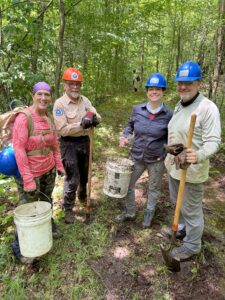In a recent NYTimes editorial, Christopher Solomon states that the Wilderness Act, at 50 years, is facing a midlife crisis. Solomon cites some environmentalists that believe human intervention may be required in order to save or restore the original wilderness qualities in many of our wilderness areas.
| Maroon Bells Snowmass Wilderness |
Due to climate change, areas like Yosemite’s Tuolumne Meadows is drying out and being replaced by lodgepole pine forest. Should the Park Service keep the meadow intact by cutting these trees and irrigating the meadow? Sequoia and Joshua Tree national parks are considering interventions to help these titular species survive rising temperatures and drought, either relocating trees or irrigating groves. In Bandelier National Monument, the Park Service has already stepped in to remove the increasing pinon-juniper forest to stave off erosion of thousands of archaeological sites and restore the grassland character of the area.
It’s an interesting question — is Wilderness truly wild? Is any place on the planet not shaped by human impact? Can we really experience land “untrammeled by man?” Grazing is still an allowed use of Wilderness, and the impacts of over-grazing are evident everywhere in the American west (compacted soils, cutbanks, disappearance of native grasses and other species, and the invasion of nonnatives). Popular areas are overrun by recreationalists, like the Maroon Bells Snowmass Wilderness where hundreds of people and their dogs pound the trails everyday.
What do you think? Is Wilderness worth keeping? Do we relax the rules to allow more intervention by land agencies or contracted concessions? Is it time to rewrite the Wilderness Act?



"If nothing else, lack of time, money and manpower will always constrain our efforts."
Luckily, the author's above comment, keeps us from thinking we are capable of making sweeping decisions about such a large topic.
I'm not sure if there has been any labor put into revegetaing the Mt St Helens area since the eruption, but it has led to a a large amount of study on ecological succession.
I'm more in favor of letting the wilderness evolve in whatever way is necessary. It will be painful to watch more plants and animals disappear, which is the down side of not doing as much as we think is doable.
It is an article well worth reading. Thanks for pointing it out.